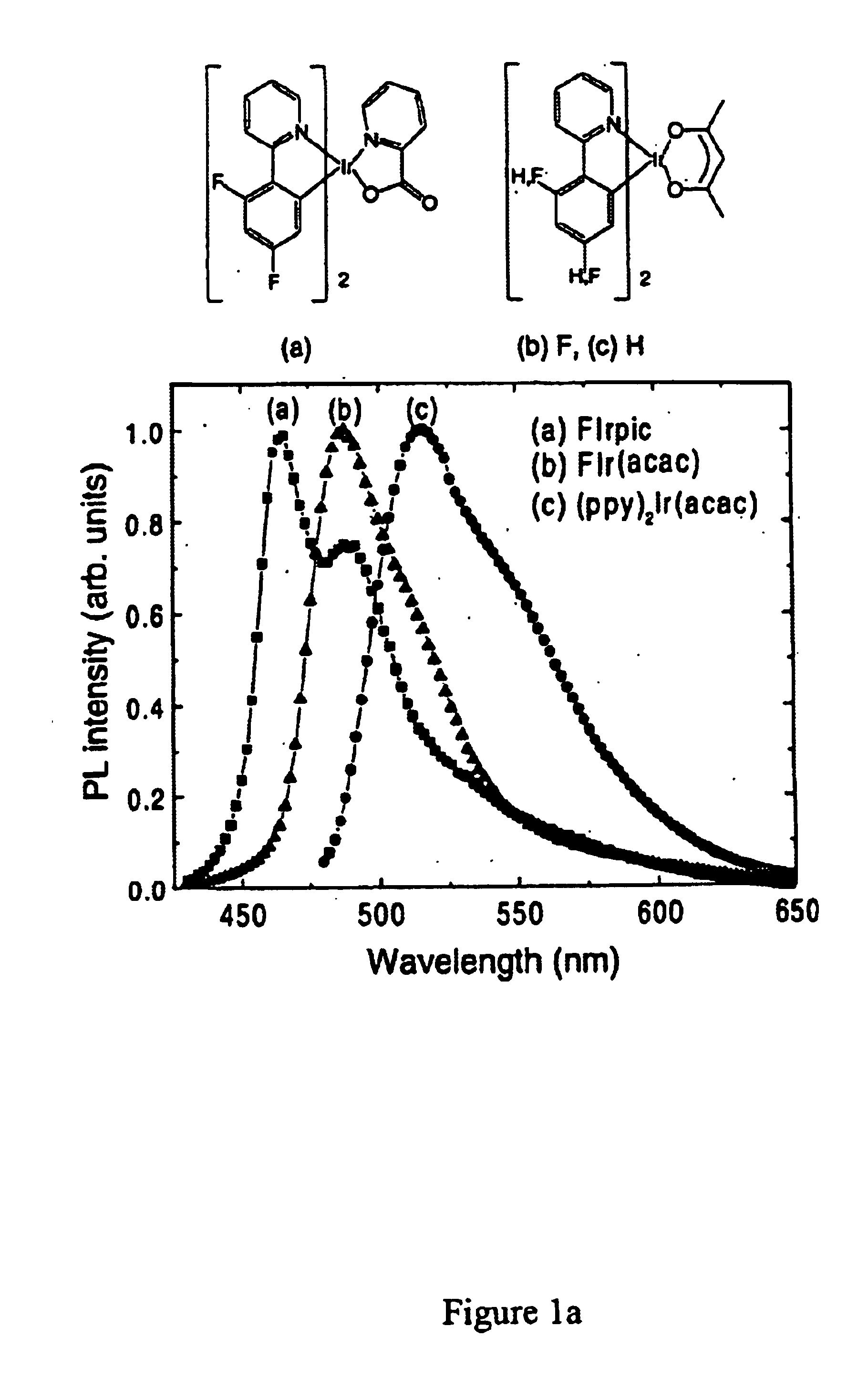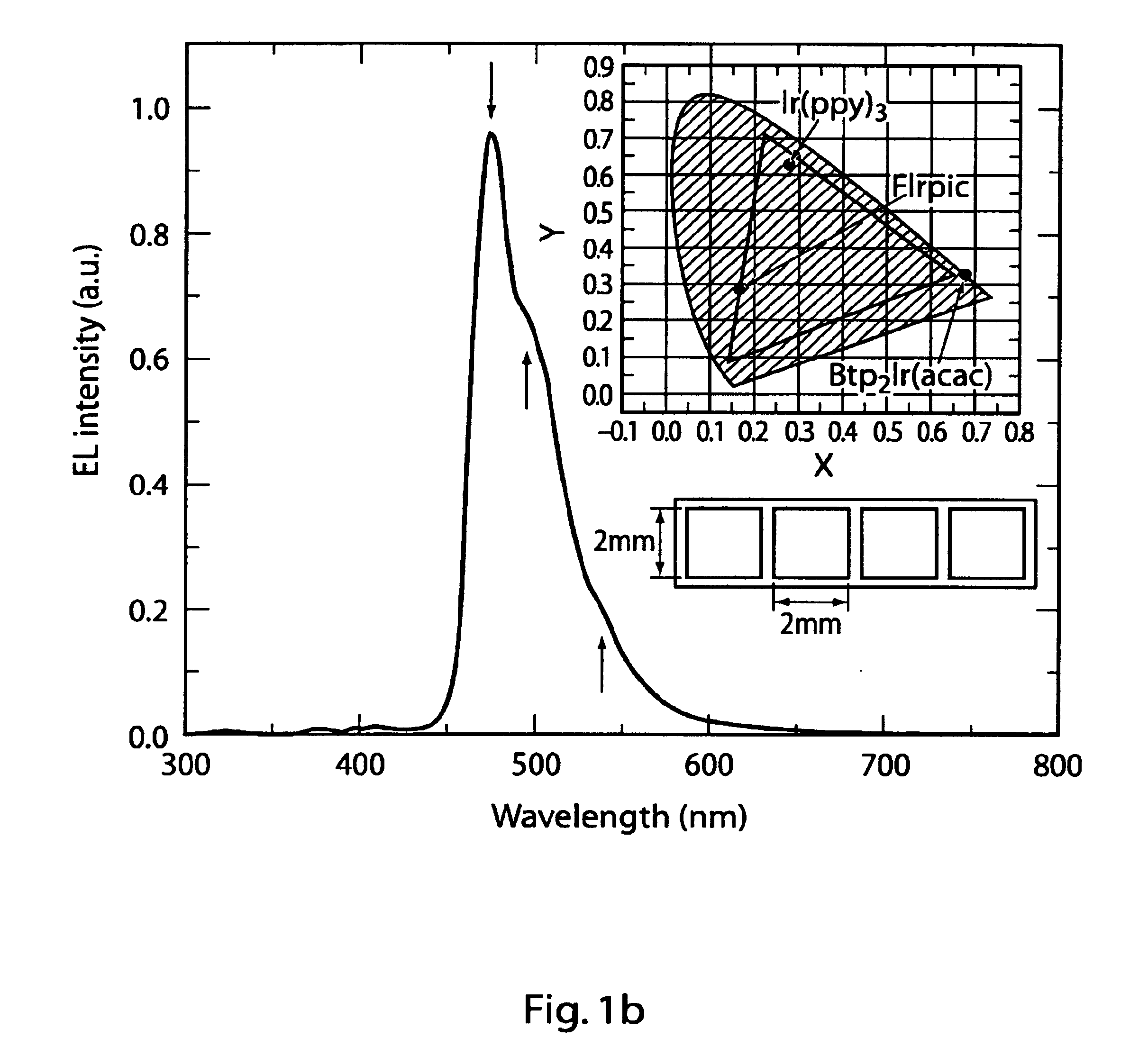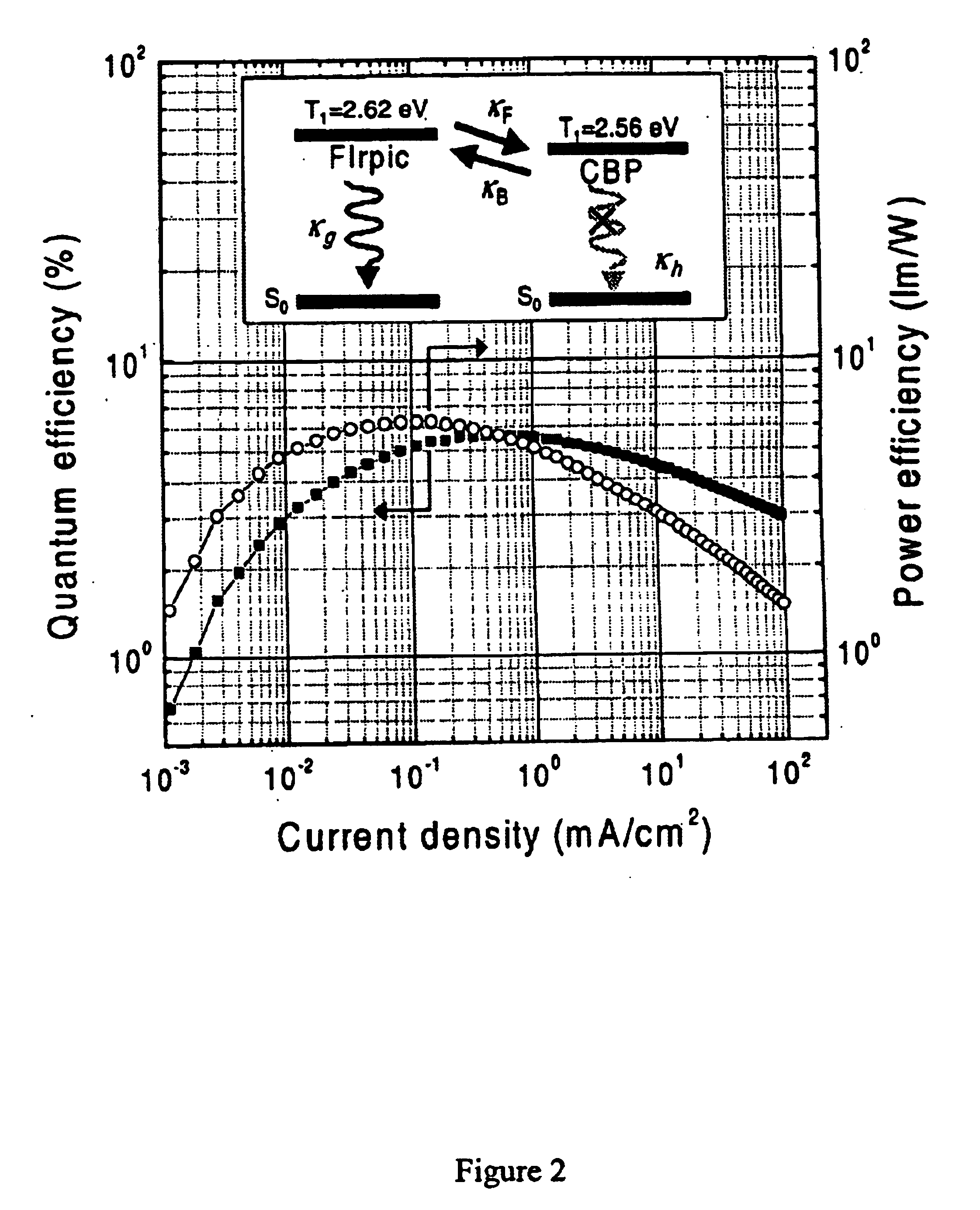Organometallic compounds and emission-shifting organic electrophosphorescence
a technology of organic electrophosphorescence and organic compounds, which is applied in the direction of discharge tube luminescnet screens, other domestic articles, natural mineral layered products, etc., can solve the problems of further reduction in efficiency, difficult to develop organic molecules that phosphore in the technologically useful blue and green colors of the visible spectrum, and emission energy, etc., to achieve the effect of improving electrophosphorescen
- Summary
- Abstract
- Description
- Claims
- Application Information
AI Technical Summary
Benefits of technology
Problems solved by technology
Method used
Image
Examples
Embodiment Construction
[0048]The present invention will now be described in detail for specific preferred embodiments of the invention. These embodiments are intended only as illustrative examples and the invention is not to be limited thereto.
[0049]The phosphorescent organometallic compounds of the present invention are comprised of: (a) a heavy transition metal such as Ir, but not limited to Ir, which produces efficient phosphorescent emission at room temperature from a mixture of MLCT and π-π* ligand states; (b) wherein the metal is bound to at least one mono-anionic, bidentate, carbon-coordination ligand substituted with electron donating and / or electron withdrawing substituents that shift the emission, relative to the un-substituted ligand, to either the blue, green or red region of the visible spectrum; and (c) wherein the metal is bound to at least one non-mono-anionic, bidentate, carbon-coordination ligand, which may be substituted or un-substituted, that causes the emission to have a well defined...
PUM
| Property | Measurement | Unit |
|---|---|---|
| decay rate | aaaaa | aaaaa |
| radiative decay rate | aaaaa | aaaaa |
| corresponding wavelength | aaaaa | aaaaa |
Abstract
Description
Claims
Application Information
 Login to View More
Login to View More - R&D
- Intellectual Property
- Life Sciences
- Materials
- Tech Scout
- Unparalleled Data Quality
- Higher Quality Content
- 60% Fewer Hallucinations
Browse by: Latest US Patents, China's latest patents, Technical Efficacy Thesaurus, Application Domain, Technology Topic, Popular Technical Reports.
© 2025 PatSnap. All rights reserved.Legal|Privacy policy|Modern Slavery Act Transparency Statement|Sitemap|About US| Contact US: help@patsnap.com



